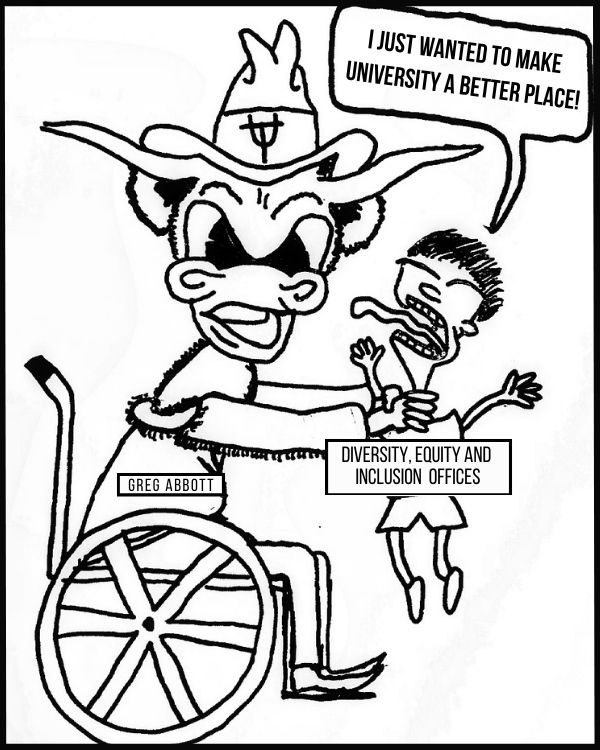A few weeks ago, the San Antonio Express-News published an article proclaiming that San Antonio is “a ‘college town’ without the name.” Citing the city’s high number of students enrolled in college — plus San Antonio’s low unemployment, high entrepreneurship and the large number of college grads moving here — the article asserted that San Antonio was becoming a community closely tied to its institutions of higher education. The article also reminded readers that city initiatives like Cafe College and Mayor Juliàn Castro’s SA2020 vision are aiming to put more local high schoolers into college in the coming years.
However, while cities like Austin and College Station have grown up around flagship institutions for decades, San Antonio’s economy has always been supported by its military institutions and blue collar workforce. Removing Texas State from San Marcos or Texas Tech from Lubbock would devastate their livelihood, but removing UTSA or Trinity from San Antonio would barely affect the lives of most San Antonians.
No matter how much Mayor Castro or the Express-News wants it to be true, San Antonio is not a college town.
At least not yet.
Many experts agree that UTSA must lead the way if San Antonio is to ever become a college town, which isn’t hard to believe when over half of San Antonio’s 110,000 students attend community college (by comparison, Austin has a student population of 103,000). Research money plays a big role in establishing a community’s relationship with local colleges, but when compared to other similarly sized cities San Antonio ranks near the bottom of this department. UTSA brings in a little over $50 million a year in research money, but its research expenditures actually fell from 2011 to 2012. The university currently estimates that it is responsible for $1.2 million in the local economy, and anticipates an increase to $2.5 billion if the university reached Tier One status (generally accepted as $100 million per year in research expenditures), on par with UT-Austin’s current level.
Of course, research spending, low unemployment and brain gain (college grads moving to San Antonio) can be attractive on paper, but they do little to attract prospective students who want to learn in a community that is welcoming to their demographic. As it stands now, San Antonio is far more concerned with attracting tourists, high tech workers and small business owners than it is with advertising to high school seniors looking for a place to spend their formative years.
While the neighborhoods between SAC and Trinity and IUW have developed into a corridor loosely catering to college students, it is both too small and too insignificant to cater to a city that seeks to be a college town — especially when the City of San Antonio anticipates a population of 127,000 students by 2021. There are of course bars and restaurants that cater to anyone willing to travel downtown for a night of fun, but that does little to attract students who live near UTSA’s main campus. For these students, their options are limited to large chains that do little to reflect San Antonio or UTSA’s identity and which rarely stay open late enough to cater to many college students. The Block, which opened this fall, and Prado Student Living, which is scheduled to open next fall, are early adopters of this philosophy, but for UTSA to be the central piece of a college town more businesses need to follow suit.
San Antonio cannot be a college town until UTSA is integrated into its economy and its culture, and this cannot happen until businesses around UTSA’s main campus begin to welcome students, rather than merely allowing them to coexist with their other clientele. UTSA has made strides to ensure that it enrolls the best students and that these students are part of a larger community. The City of San Antonio has provided funding to give UTSA a platform to advertise itself in the form of its sports teams through a bond that facilitated the construction of the Park West Athletic Complex and through a deal with City Council permitting use of the Alamodome. A bond passed last year by San Antonio voters will allow for the expansion of Hausman Road, and the Texas Department of Transportation will begin expansion of Utsa Blvd in February. Even the wealthy donors of San Antonio have poured money into the university through the Capital Campaign Fund, dwarfing the donations of even UTSA alumni.
San Antonio is not a college town and it likely won’t be one for a long time. There still exists a large disconnect between the city’s universities — particularly UTSA — and the city’s own cultural and economic fabric. UTSA, the City of San Antonio and the city’s donors have made strides that will make the eventual transition to a college town easier. However, the businesses around UTSA’s main campus need to cater to students and reflect a collegiate culture, and UTSA needs to double down on research that will bring it and the city closer.
UTSA may eventually be the hub of a vibrant college town, but such a distinction is premature until UTSA can shake its reputation as a commuter school. Many students need more from a university than strong academics and a job after graduation, and San Antonio cannot offer them such a lifestyle just yet.

















